Gorgeous plant combos at the Dallas Arboretum
While viewing the Chihuly exhibit at the Dallas Arboretum on Sunday, I admired plenty of garden beds that did not contain stunning glass sculptures, like this gomphrena and drumstick allium combination. The airy, blue-green allium stems complement the purplish pink gomphrena heads so beautifully.
A wider view reveals the color echo between the allium and gomphrena blooms.
I was quite smitten by these drumstick alliums. Does anyone grow them in Austin?
The colorful balls of the gomphrena contrast nicely with the spiky shape of a blue grass (or yucca?).
A closer look
One of my own favorite color combinations: fiery red salvia (S. coccinea) and a powder-blue ‘Whale’s Tongue’ agave (A. ovatifolia)
Pulling back, you see a fantastic vignette of the ‘Whale’s Tongue’ agave, red yucca (Hesperaloe parviflora), Chihuly’s ‘Yellow Icicle Tower,’ sotol (I think), yucca, and a blue-green grass in the foreground.
One of my favorite annuals for long-lasting summer color, ‘Senorita Rosalita’ cleome, is used here in a grand sweep around a large, dark grass (Pennisetum ‘Prince’?) and purple salvia.
Reminiscent of a Mediterranean olive orchard, this allee of contorted vitex trees is not yet in bloom, but at its feet, yellow St. John’s wort (Hypericum) brightens the path. Simple and beautiful.
A cheery pot of Gerbera daisies and yellow-green sedge
Classic beauty: a double line of clipped and potted boxwood ascends a stone staircase.
Aside from the Chihuly glass, classical sculpture also shows to advantage among mass plantings, like this young woman stepping gingerly into…a pool of cleome?
Testing the water
Hollyhock
Bedding annuals usually do not appeal to me, but I like this color combo with the blue-green grass behind it.
I also like this more, ahem, middle-aged version of ‘The Kiss.’
Apricot roses show off well against deep-green boxwood.
Rocket-shaped white columbines pair well with another virginal white flower (ID, anyone?).
And just look at this picture-perfect, little-girl combo. A trio of girls in First Communion dresses were being led around by their mothers and a photographer. I couldn’t resist snapping my own photo when two of the girls paused for a quiet moment in front of pink cleomes.
I only wish I’d also taken pictures of all the Quinceañera girls in candy-colored, ruffled and tiered, strapless dresses, with hems hoisted off the ground and a photographer in tow, each looking for the perfect spot to commemorate her big day.
All material © 2006-2012 by Pam Penick for Digging. Unauthorized reproduction prohibited.


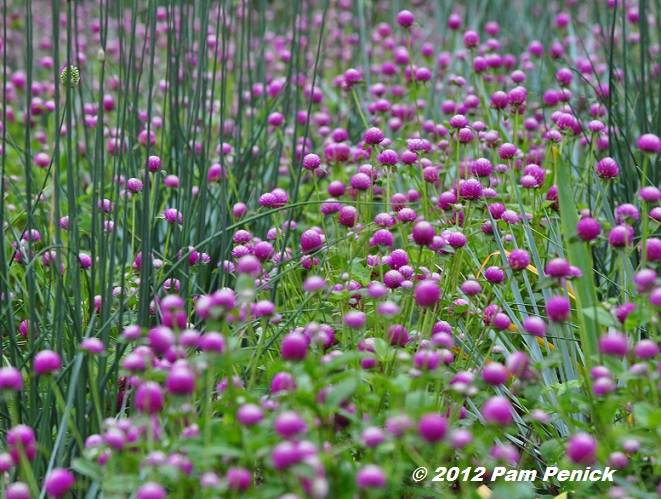
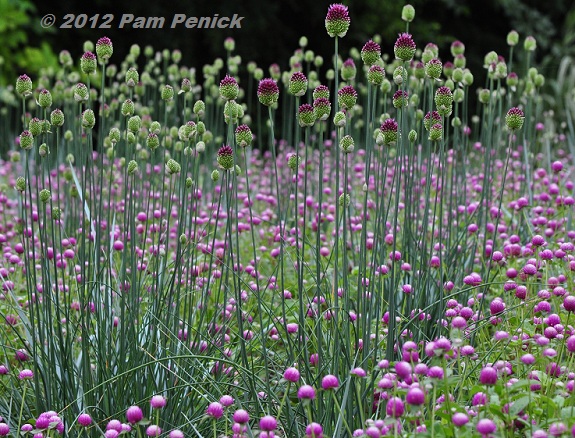
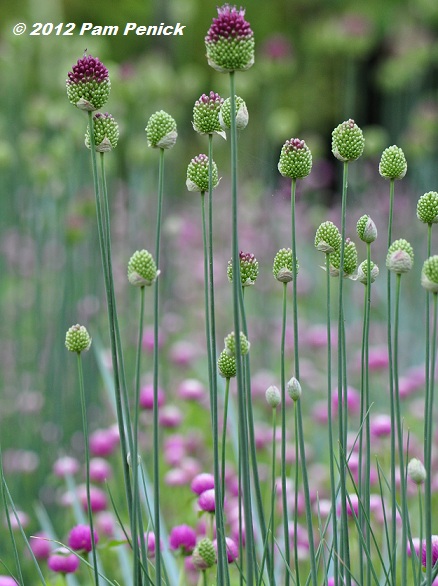
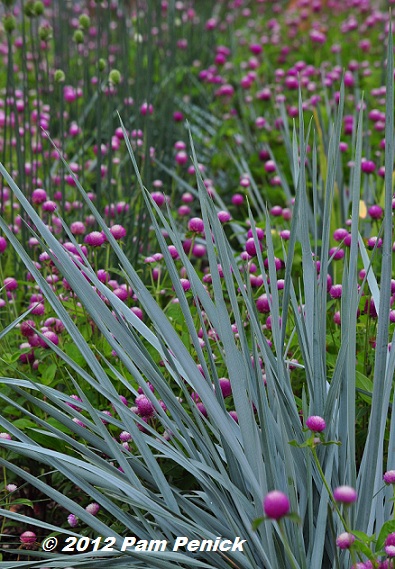
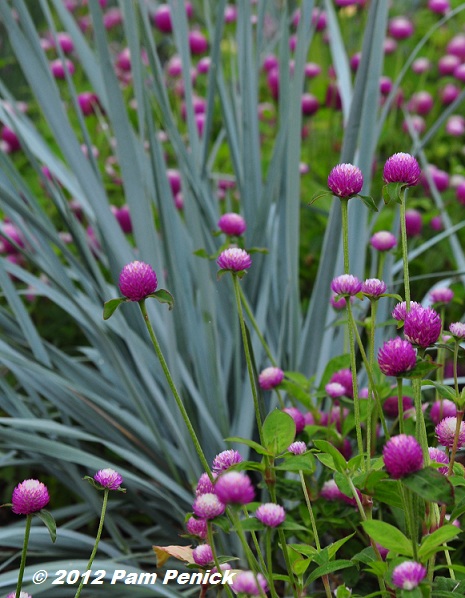
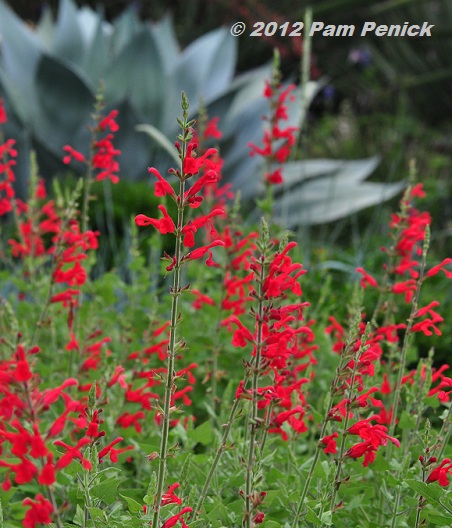
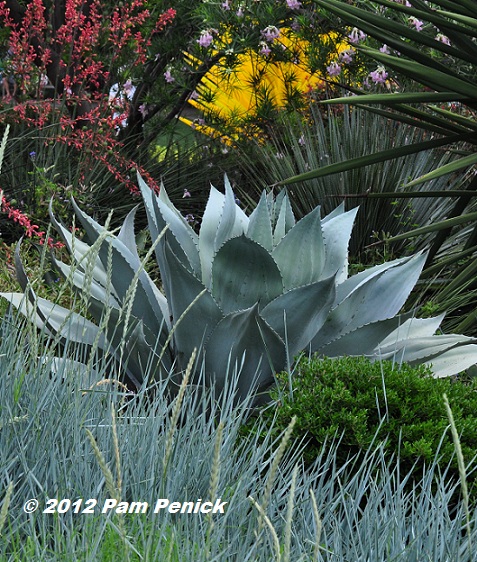
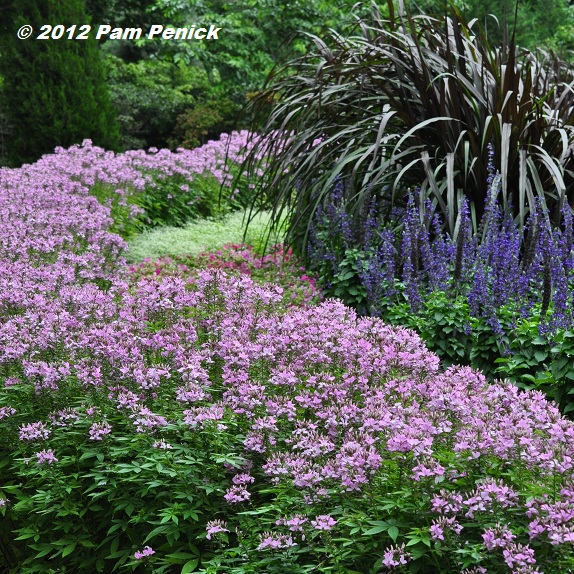
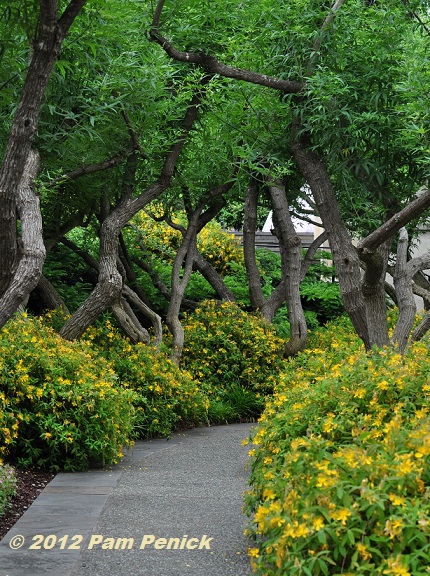
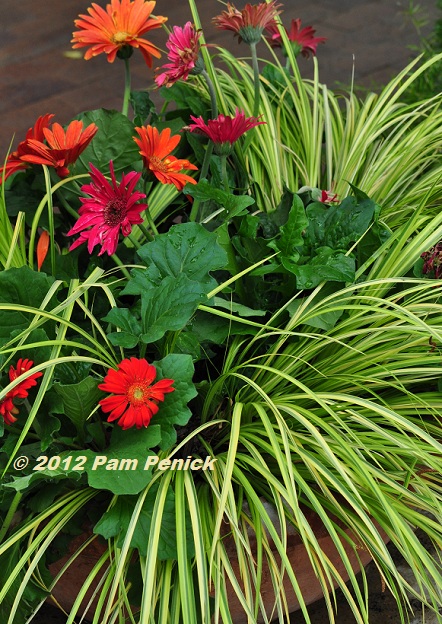
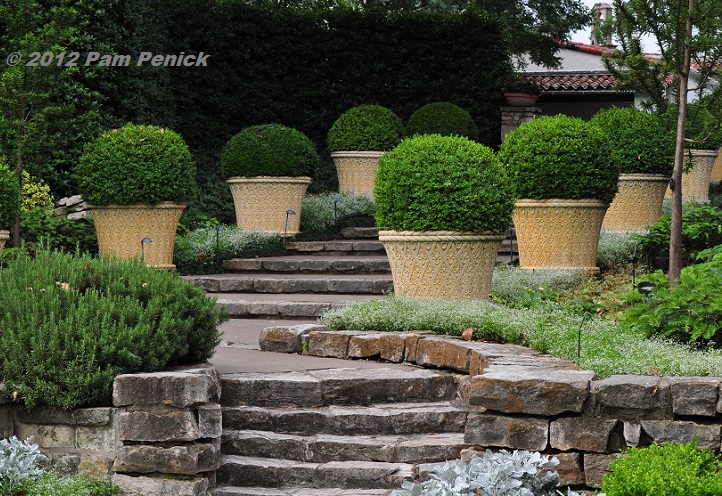
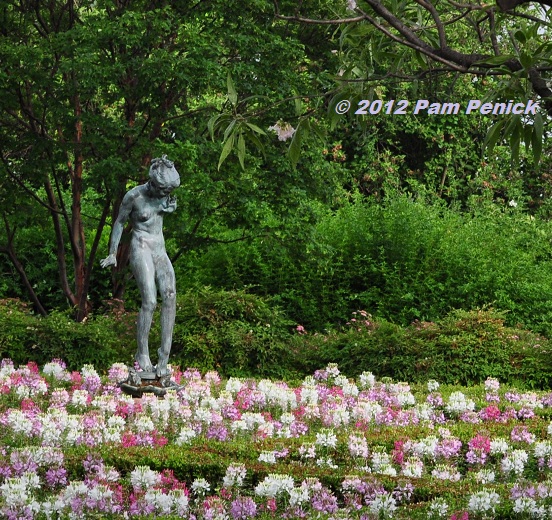
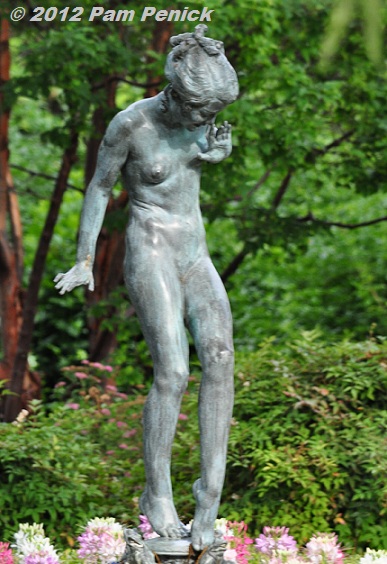
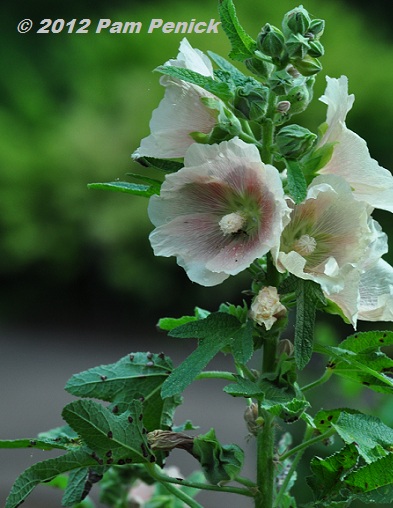
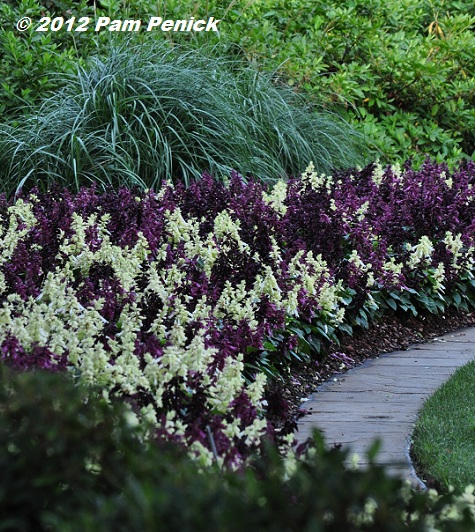
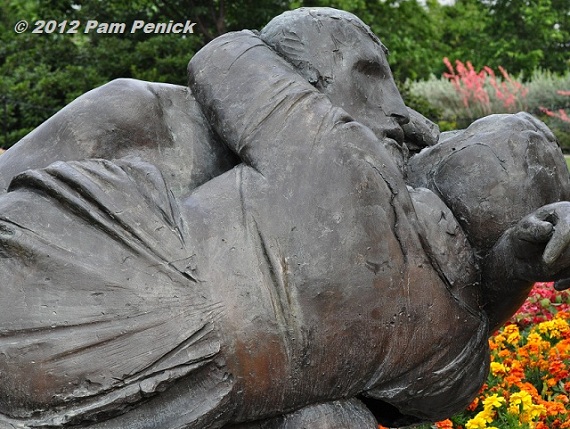
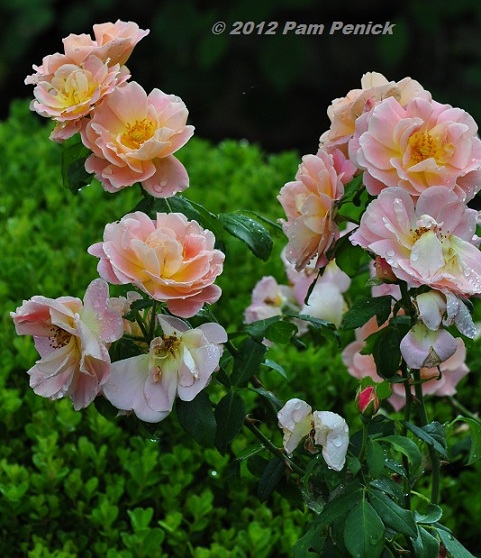
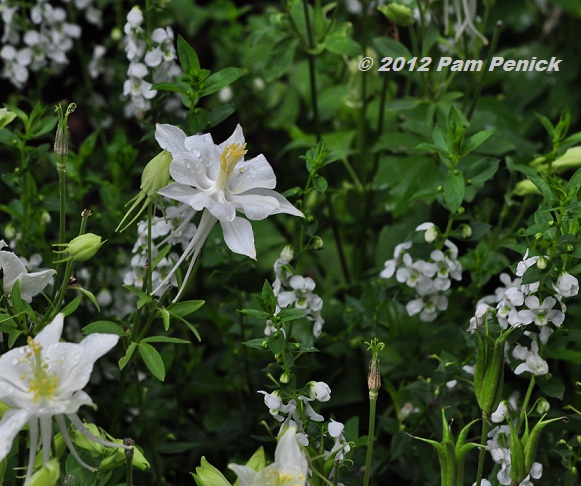
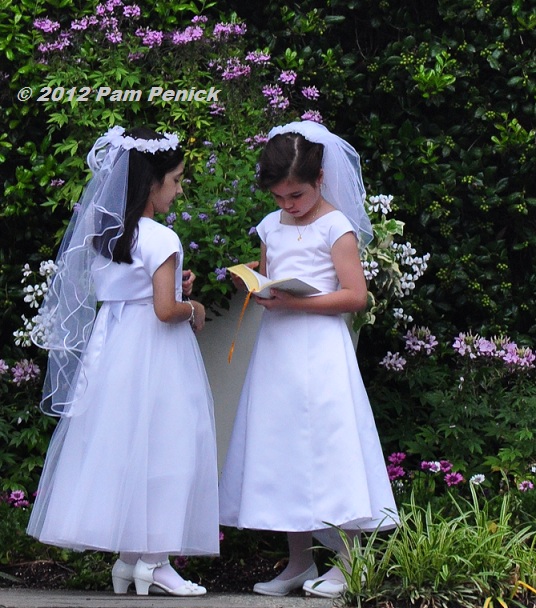
That Gomphrena and Allium combination is genius. I’m sad that I’m not the one that thought of it.
It’s a great idea, ripe for copying in one’s own garden. 😉 —Pam
These pictures do a great job of showing how combinations of colors, shapes and textures make a garden more beautiful. They have certainly done a good job. The picture of the little girls was precious.
Thanks, Bob. I’m glad you enjoyed the pics. —Pam
Angelonia is the name of the white flower paired with the columbine! (it sure looks like it) So pretty..
Perhaps so, Lorin! Thanks for the possible ID. —Pam
I’m still processing the Chihuly photos, and then you spring this. Too. Much. Beauty. Thank you for capturing it.
I think maybe the blue spiky grass is Blue Dune Lyme Grass.
Cyndi, I was overwhelmed by all the lovelies too, and am glad I was able to capture some of it to share. 🙂 Thanks for the possible ID of the blue grass. That does look likely. —Pam
I love seeing all of those masses of flowers. It makes me wish I had acres to plant. Those little girls are precious. I am sure their photographer didn’t get a better photo. I read your article in Garden Design magazine. Very Good. Makes me want to go to Peckerwood.
With your interest in cactus and agaves, you’d love Peckerwood, Lisa. I hope you get a chance to visit. —Pam
Beautiful photos Pam. We were just there at Easter and D arboretum is always picture perfect. I grew those drumstick alliums one time but only had 6 and yes they flowered only one year. Gomphrena is much more reliable.
Ah, I knew there’d be a catch in regard to the alliums. But at least we can have gomphrena. —Pam
I appreciate your photos. The Arboretum is beautiful, but I find the crowds daunting. You’ve encouraged me to try a visit. Also just read your article in Garden Design on Peckerwood. Nice job. I want to go there as well. Thank you for always enlightening and inspiring me.
Thanks for your kind words, Gretchen. Do go to the Arboretum. I would think a weekday visit at opening would be the time to go in order to avoid the crowds. —Pam
WOW, those alliums! Great photos.
Thanks, Heather. —Pam
Love it…the Allium and Gomphrena photos are stunning…just awesome! Makes me glad I bought some Gomphrena seeds last weekend!
I have some red gomphrena seeds and keep meaning to plant them. —Pam
I’m buggered if I know why we don’t grow more Gomphrenas here. They look amazing with the AlLiums. I will have to look into it. Do Gomphrenas come in different colours?
They sure do, Kerry. I know there’s purple, pink, and red. —Pam
Kerry, the Gomphrena come in all colors and strawberry fields is so pretty, also love the new fireworks or firecracker…very unusual. Love them and they love our heat! Pam, I just love all your photos, so inspiring!
Thanks, Lorin. Yes, the ‘Fireworks’ gomphrena is gorgeous. Click for pics of it from a visit to the Dallas Arboretum last fall. —Pam
All your photos are lovely, as always, but I am particularly enamored of the 3rd one from the top – the portrait of the alliums echoed by the soft mirroring of the gomphrenas below. Just lovely.
I’m so glad you enjoyed the pics, Barbara. —Pam
Allium and gomphrena — brilliant! Great idea to push orbs on stems as far as possible. The alliums will turn a pale straw color before the gomphrena fades which could be interesting or they might pull the allium out and let the gomphrena take over. I wonder if that blue grass is a panicum or lyme/elymus, but so cool with the whale’s tongue agave. When I see your photos of Moby and other whale’s tongue they scare me into keeping mine in a tiny, tiny pot for now.
Oh, Denise, Agave ovatifolia wants to swim free in your garden. Release the Kraken! —Pam
These beds are all just fantastic displays! I love everyone of them. The Gomphena/Allium combo is definitely the star although my favorites (long time biased)is the CLEOMEs! The rose cleome, pennisetum prince and purple salvia are gorgeous(my personal fave)!! I try to have all 4 Cleome colors each year.
By the way the Gomphrena also has several white varieties. Gnome white is my favorite, nice on raised terraces alongside a walkway. I have used dusty miller or stachys bzantina lambs ear with the white gomphrenas. Also Buddy white is an offwhite,very color stable for ecru.
The first “blue grass” (with gomphrena)at first glance does seem to be a yucca, considering the very broad blades, but then the BASE profile seems to be a grass? Can’t tell from here in Florida 🙂 But, the second blue grass does seem to be Fescue Festuca Elijah Blue! Which is alittle more upright, stately (prickly like) than the more evasive, clumping lyme grass that seems to break half-way up the blade. The 3rd “blue grass” with the purple(salsa?)/white(magic?) salvia combo does seem to be Leymus Arenarius blue Dune Lyme Grass! The beautiful thick mound here has that “breaking form” almost a cascade effect. Anyway that would be my guest.
Now for the finale – the mysterious white flower with the columbines maybe another favorite of mine (via my grandmother 40yrs ago), an old fashioned update, the garden phlox paniculata!! NO? My favorite was always “David” variety, although this could be dwarf “white flame” with broader blossoms.
Anyhow, I really enjoyed these photos and can’t wait for the next spread! Thank you very much for the beauty!
Rex, it was a treat to read your informative and enthusiastic comment. I’m glad you enjoyed the post, and I hope you’ll visit and comment again soon! —Pam